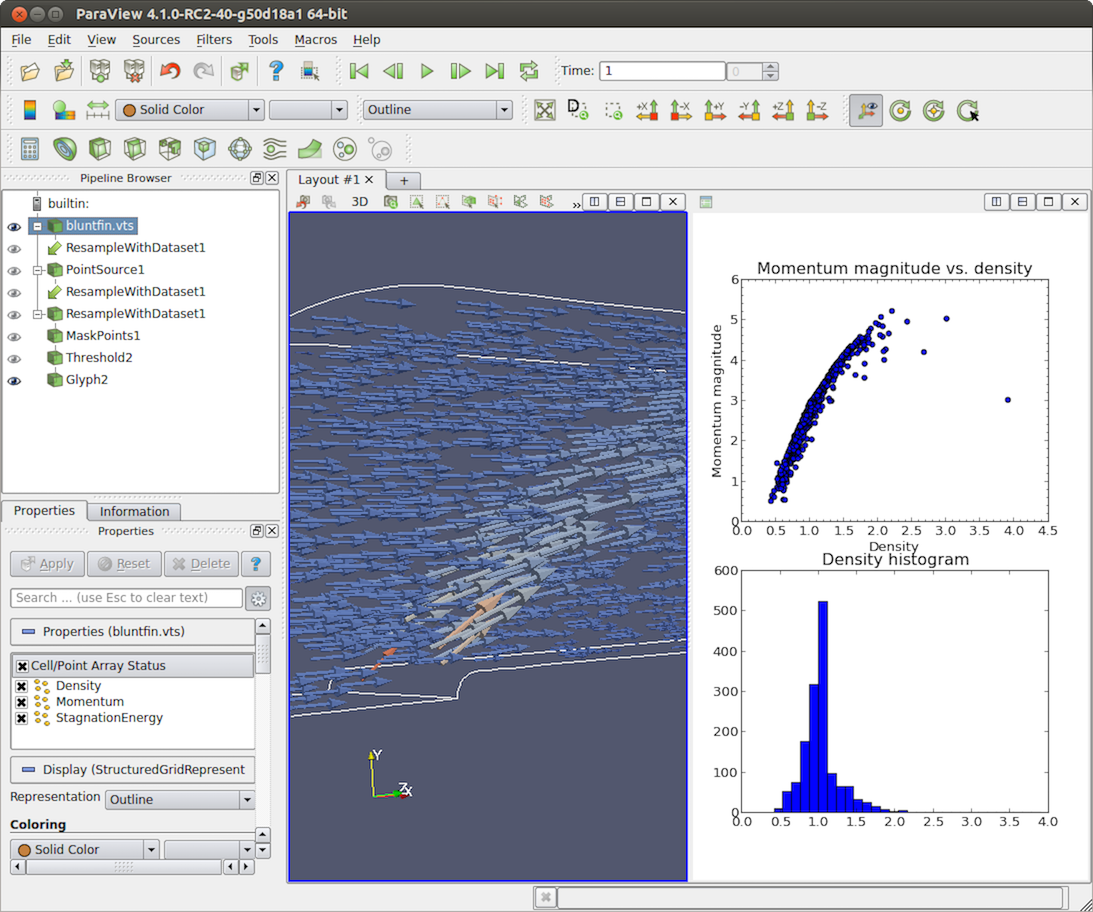

from paraview.simple import *įrom _interface import dataset_adapter as dsaįrom paraview.numpy_support import vtk_to_numpy If I manage to get this part, the remaining calculations are easy for me within python. The code is attached below, which stops at the point where I can get the datasets.
Paraview vtk python manual full#
With some difficulty I could extract some datasets of interest, but not the full matrix of data including the coordinates, so I could do the subsequent calculations.
Paraview vtk python manual how to#
My first problem was how to transform the vtk data into a format that can be easily understood and manipulated with a python script. But since I’m not very comfortable with the different Paraview pathways to go about this, I am a little confused whether I should use a python calculator, a programmable filter, paraview.simple, other libraries of paraview, or any other method. Method B: Tried to complete the whole task within a Paraview python script, which is my preferred method. So this could be resolved if there was a straightforward method to export the cell size when converting the vtk to csv. This is a simple task, if the cells are made by a structured fixed size mesh, but unfortunately this is not the case. Through a python script outside paraview I could do all the computations as explained above, with the only problem that I had to manually set the size of each cell when computing the integrals. Method A: Converted the vtk datasets into csv files within Paraview, one csv file for each timestep. I used 2 methods so far but I ran accross some problems.

To briefly explain the problem, I have cfd results of a flame, which I need to split in 2 pieces based on some criteria and compute the integrals of the heat release for the 2 separate domains separated by the straight line split. I can do the analysis that I will explain below in the Paraview GUI very easily within a couple of minutes, but due to the large number of timesteps I need to automate the process. The dataset consists of almost a million points in the domain, and temporal results of about 1000 timesteps. I have temporal and spacial data saved from a simulation in vtk files.


 0 kommentar(er)
0 kommentar(er)
